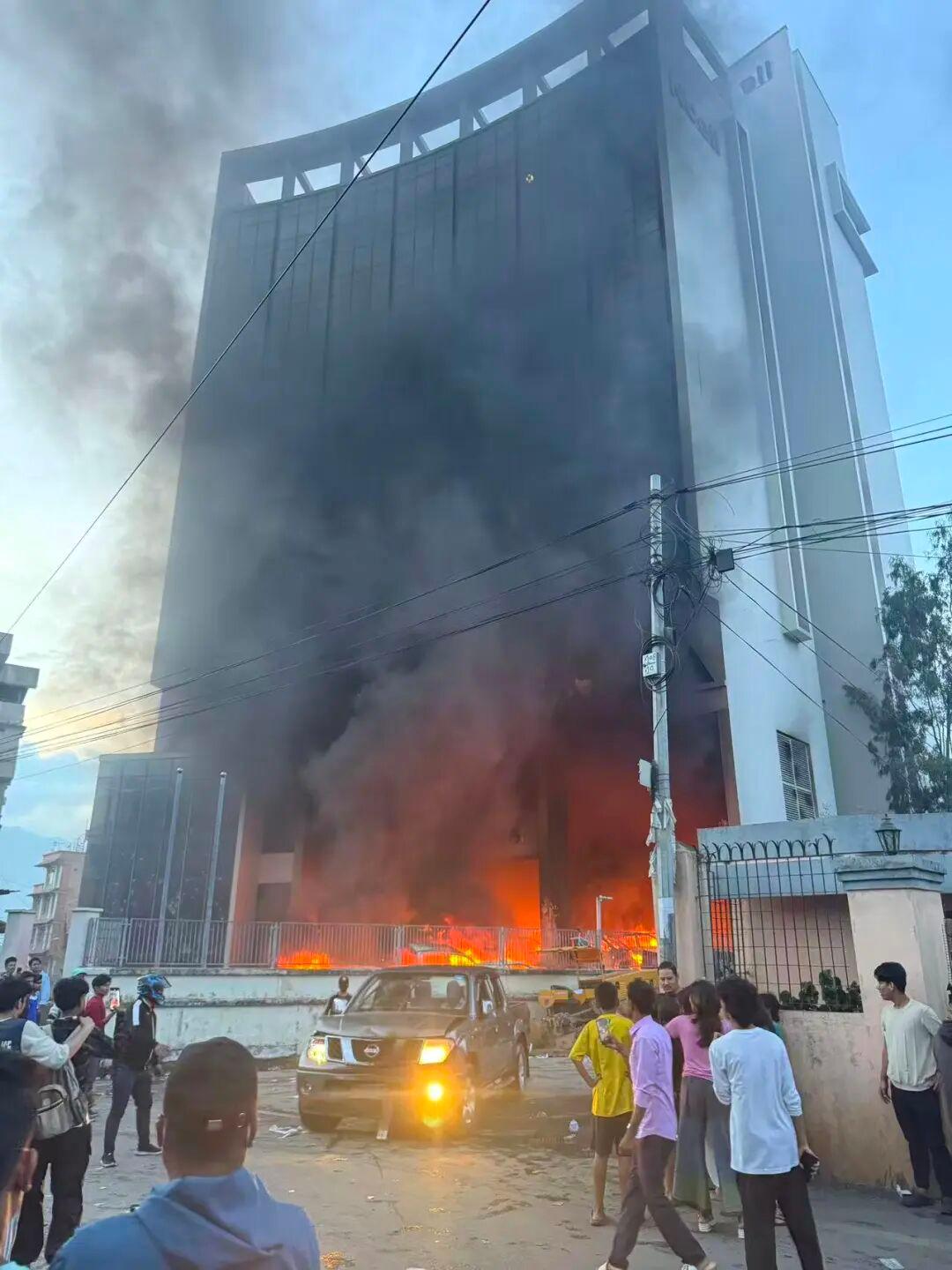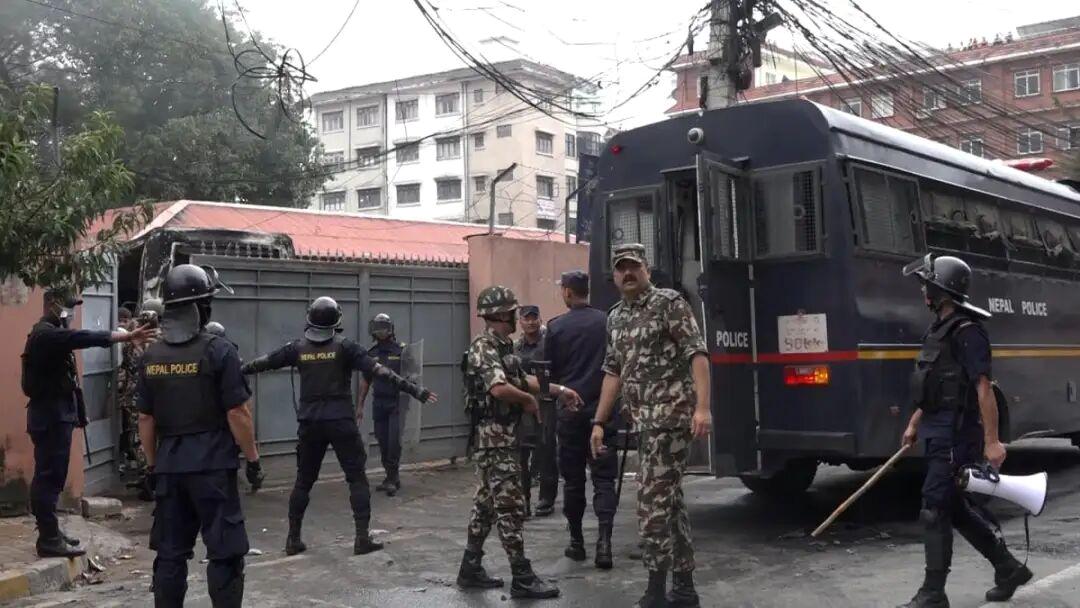Eric's Insight: Rose revolution marks Nepal's Gen Z rebellion
The label Gen Z, a widely used abbreviation for Generation Z, denotes generational cohorts born between the mid-1990s and the early 2010s. Recent events in Kathmandu show how the country's Generation Z citizens are beginning to transform latent frustrations into public discourse. On September 7, the capital erupted in an outpouring of resentment that many observers described as setting the city “on fire.”

Inspired by contemporaneous movements in Indonesia and the Philippines, Nepali youth coalesced around a powerful analogy between themselves and the so-called “Nepo Kids,” a phrase mocking the children of politicians whose lavish lifestyles jarring opposition with the everyday struggles of ordinary citizens.
The “Nepo baby” rhetoric resonated profoundly with Gen Z, giving voice to suppressed resentment toward corruption and political impunity. United by a remarkable solidarity, Gen Z advocates for systemic change, directly confronting an intransigent political establishment that has maintained its grip on power for generations without meaningful reform.
The underlying causes of the unrest were further intensified by reports of proposed social media restrictions, a move widely perceived by youth as a blatant attempt to silence them. In response, Gen Z orchestrated a leaderless, grassroots mobilization, staging nationwide peaceful protests on September 8.
Demonstrators consciously employed a strategy of symbolic non-violence: they scrupulously avoided vandalism, donned school and college uniforms to signify their apolitical, student identity, and extended roses to police officers as a poignant gesture of respect resembling a “color revolution.”
The widely popular Kathmandu Mayor, Balen Shah, publicly endorsed the spontaneous Gen Z rally cautioning potential infiltration or co-optation by political parties, individual leaders, activists, or interest groups. The initially peaceful protests dramatically escalated into violence when thousands of young demonstrators marched on the federal parliament, their chants denouncing the authoritarian regime. In a dramatic turn, protesters breached police barricades and entered the parliament premises.

The state retaliated with an intensified crackdown, firing at close range, including head and chest shots, resulting in the death of at least 19 students and injuries to over 500 individuals within hours. The exact death toll across the nation is unknown. The immediate trigger of the nationwide unrest that followed was not the breach, but this brutal killing of young people by the state's security forces.
In response to the escalating crisis it had created, Kathmandu district authorities imposed a curfew and unleashed security forces, who engaged in brutal beatings of civilians throughout the night. Videos of this repression circulated widely on social media, broadcasting the state's intense crackdown on platforms like Facebook, Instagram, and TikTok. This prompted condemnation from Amnesty International against the state’s use of unlawful force and a demand from the UN for a fair probe.”
Although international media frame the protests as a reaction to the social media ban, this was not the demonstrators’ primary agenda. By September 9, enraged crowds had set fire to the residences of former presidents, prime ministers, and senior political leaders, coinciding with the resignation of the prime minister.
Protesters also breached Singha Durbar, the central hub of Nepal’s government ministries, and burned the central offices of major political parties, including the Maoist Centre, UML, and Nepali Congress, as well as other party offices and leaders’ homes, including those of K.P. Sharma Oli and several senior ministers. The sequence of events unfolds a profound public backlash against state repression.
As the unprecedented protests escalated, the Nepalese Army evacuated senior political leaders from their residence leaving the government apparatus momentarily paralyzed. Nepal has descended into chaos and widespread anarchy, with the whereabouts of Prime Minister K.P. Sharma Oli remaining unknown. In a pivotal address, Nepal Army Chief General Ashok Raj Sigdel urged protesters to remain calm, refrain from damaging national property, and assured that all security agencies would assume control of the situation after 10 p.m. to restore order.

The true catalyst of the unrest lay in systemic corruption, nepotism, and the reckless looting of national resources by political elites leaving youth grappling with unemployment and deepening poverty. In 2024, Nepal attained a score of 34 on the Corruption Perceptions Index, placing it 107th among 180 countries, indicative of enduring and pervasive corruption.
The ultimate political resolution remains indeterminate. Given the apparent lack of restraint among the protesters and leadership void, it remains highly arguable whether any single political actor can emerge as dominant. Nepal do not have any historical precedent by military praetorianism. Army's role would almost certainly be circumscribed to a temporary mandate of restoring public security to reinstate legitimate civilian authority. Yet the stability is fragile and contingent if without meaningful structural reform.
Under Article 273 of the Constitution of Nepal (2015), the President may declare a state of emergency if a grave threat arises to the country’s sovereignty, territorial integrity, or security, including situations of war, external aggression, armed rebellion, severe economic disarray, natural calamities, or epidemics crisis.
Now someone is worried that Hami Nepal will suddenly emerge as a dominant, extreme and anti-China force. But I don’t think this non-profit organization Hami Nepal is the faces of Gen Z. There is no evidence to substantiate that these people are Gen Z prominent leaders. For leadership positions there are potential candidates like people want Mayor Balen Shah to lead the nation. Hami Nepal supported the protest. According to whatever I have listen from Gen Z side, Hami Nepal groups is the interest groups they literally don’t want them to represent Gen Z.
Source: Mekong News Network (The writer Suloja Khadka is a Nepalese national and doctoral candidate at the Institute of International Studies, Fudan University)